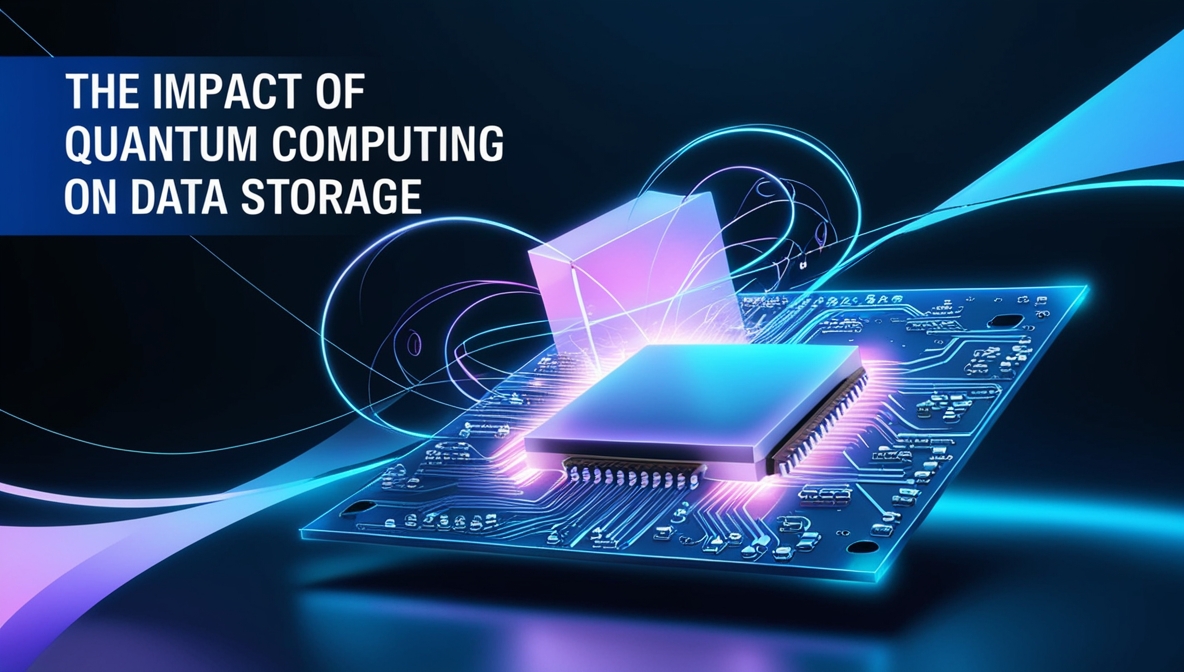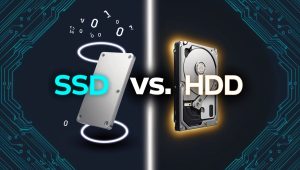The Future of Solid-State Drives: Predictions for the Next Decade
Solid-state drives (SSDs) have already disrupted how data is stored, transferred, and accessed. As demand grows for faster and more efficient storage solutions, SSDs are poised to redefine expectations over the next decade. What comes next will be shaped by advancements in materials, interfaces, architecture, and intelligent storage management.
1. PCIe 6.0 and Beyond
Faster interfaces will push SSDs beyond current bandwidth ceilings.
- PCIe 6.0, expected to see wide adoption by 2026, offers up to 64 GT/s per lane.
- This means NVMe drives will exceed 14 GB/s in read/write speeds, surpassing the current ceiling of PCIe 5.0-based SSDs.
- PCIe 7.0 is already in development, targeting 128 GT/s, pushing SSDs into a new class of performance, especially for high-frequency trading, real-time AI, and 8K+ media workloads.
2. QLC and PLC NAND Going Mainstream
More bits per cell will lead to denser and cheaper storage—but not without tradeoffs.
- Quad-Level Cell (QLC) NAND is already in use, with Penta-Level Cell (PLC) around the corner.
- Expect SSDs with capacities above 100 TB by 2030.
- Write endurance will remain a concern, but improved error correction, wear leveling, and firmware tuning will help offset it for most use cases.
3. DRAM-less and HMB Evolution
SSDs without dedicated DRAM are gaining ground thanks to smarter controller designs.
- Host Memory Buffer (HMB) use will expand, allowing SSDs to borrow DRAM from the host system efficiently.
- Future NVMe protocols will better optimize HMB management, minimizing the performance penalty while maximizing cost-efficiency.
- Expect these drives to take over the entry- and mid-level segments of the consumer market.
4. Zoned Namespace (ZNS) Adoption
ZNS will reshape how data is written to flash, increasing longevity and performance.
- ZNS allows the host to control how and where data is written, avoiding costly erase/write cycles.
- This shift in data management aligns perfectly with AI/ML workloads, large-scale logs, and streaming use cases.
- Widespread ZNS adoption will push firmware sophistication to new levels, particularly in enterprise SSDs.
5. AI-Powered Storage Optimization
SSDs will not just store data—they’ll learn how to store it better.
- AI-based algorithms will manage thermal conditions, read/write frequency, and data placement in real time.
- Predictive wear analysis will become standard, reducing unexpected failures and improving drive lifespan.
- Expect these smart features to be embedded in firmware, accessible via advanced SSD utilities.
6. 3D NAND Layer Scaling
More vertical layers mean more capacity without increasing footprint.
- The industry is pushing beyond 200 layers, with projections of 500+ layer 3D NAND by the early 2030s.
- Manufacturers are working to solve challenges related to interconnect reliability and signal integrity as the stacks grow taller.
- These higher-density chips will make ultra-slim terabyte-class SSDs standard across mobile and embedded systems.
7. Energy Efficiency and Thermal Design
As speeds rise, power consumption and heat become key concerns.
- Next-gen SSDs will focus heavily on thermal throttling minimization, using graphene heat spreaders and active cooling in high-performance models.
- Expect SSDs to integrate power state transition intelligence, dynamically adjusting operation based on workload.
- This will directly benefit datacenters, where every watt saved scales into significant operational savings.
8. Consumer Expectations: Boot Times, Load Times, Lifespan
SSDs are moving beyond “fast enough.” Users now expect zero lag.
- Instant-on boot will be expected from all devices, not just flagship models.
- Game and app load times will shrink to the point where loading screens are phased out by design.
- Manufacturers will compete not just on speed, but on drive longevity, update transparency, and user customization.
9. Universal Form Factors and Modular SSDs
Form factors will unify as modularity takes hold.
- The M.2 2230 and M.2 2280 will dominate, but newer formats like EDSFF will gain traction in servers and edge computing.
- Expect tool-less modular SSD designs to appear in consumer devices, similar to RAM upgrades today.
- Modular storage bays will become common in desktops and high-performance laptops.
10. SSDs as the Default, HDDs for Cold Storage Only
Hard drives will survive, but their territory shrinks every year.
- By 2035, SSDs will dominate all tiers except long-term archival and surveillance storage.
- Hybrid SSD-HDD solutions will persist in some budget systems, but even those will phase out as QLC and PLC prices drop.
SSDs are no longer just an upgrade—they’re the standard. The decade ahead will refine them into tools that store data faster, smarter, and longer, built for workloads that don’t yet exist. Those building systems today need to be thinking about SSD readiness for tomorrow’s demands.












Post Comment